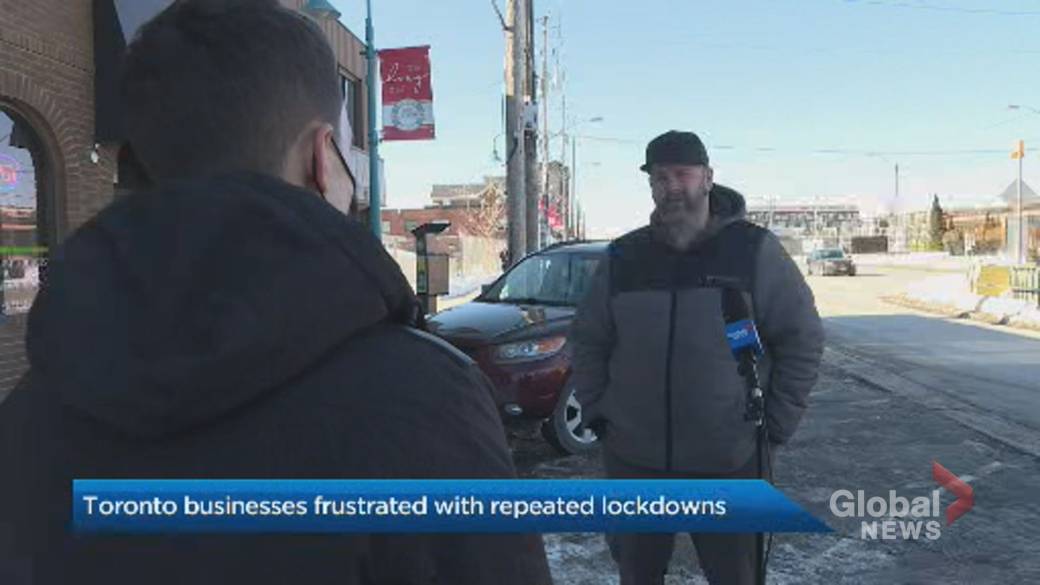TORONTO – Restaurants, gyms and theaters in Ontario welcomed customers back Monday as the restrictions of the latest pandemic-related shutdown eased, with customers eager to return and businesses hoping to put their widespread COVID-19 closures behind them.
The reopening was the first step in Ontario’s plan to gradually withdraw public health measures introduced earlier this month to curb the spread of the highly contagious Omicron variant.
Restaurant dining rooms, gyms and cinemas have been allowed to reopen at half capacity, with customers having to provide proof of COVID-19 vaccination. Larger venues, such as sports arenas and concert halls, can also reopen with no more than 500 people, with smaller venues limited to half the capacity.
Read more:
Here’s what’s open at 50% capacity in Ontario on January 31st, as restrictions ease
Some surgeries that interrupted to maintain health system capacity during the rush of Omicron patients were also allowed to resume from Monday, while the size of social gatherings increased to 10 people inside and 25 people outside _ from five inside and 10 outside.
Toronto was very excited to return to their regular routines.
Amandine Laurent said she was “definitely happy” to visit the gym again, something she did several times a week before the most recent closures.
“It’s hard because I lost my routine … the restraint did not make it easy to exercise,” she said on her way to a downtown gym.
Read more:
Ontario to resume non-urgent operations on Monday
Kyle Jageshar, who was on his way to the same gym, said he had counted down the days to Monday. Exercising or walking in his apartment during the recent set of restrictions was not the same, he added.
“Going to the gym every day is something I’m used to, it’s part of my routine and it’s something that makes me feel better about myself, so I’m definitely excited to be back,” he said.
Elsewhere, Mark Lovewell enjoyed a coffee at a restaurant before going to his office.
“It’s a wonderful feeling of relief to be able to go back to something that’s almost normal,” he said.
Read more:
Doug Ford says Ontario must ‘learn to live with COVID’ before reopening Monday
Lovewell said he had taken three doses of a COVID-19 vaccine and had recently recovered from the Omicron variant of the virus, which made him all feel safe eating indoors.
Ryan Mallough of the Canadian Federation of Independent Businesses said business owners who “carried the heaviest” of the latest wave of closures feel hopeful about the reopening, but realistic about the fact that customers may not be in a hurry to go to a restaurant eat or exercise at the gym after the latest boom in COVID-19 cases.
“Hopefully this is the last time we will have to go through reopening,” Mallough, senior director of the CFIB in Ontario, said in an interview. He said businesses are getting ready for a slow start.
“Just because we are open does not mean that customers are returning. “Consumer confidence is often a bit backward, people are still a bit cautious.”
Mallough said the 50 per cent capacity limit would be a struggle for some businesses, especially as much lower traffic was expected in the early weeks, but noted that “anything is better than being completely closed.”

He said businesses hope health indicators improve so they can reopen at full capacity soon. There is also some frustration over slow access to the provincial government’s grant program that supports businesses, Mallough said.
Changes to the province’s COVID-19 testing policy are also causing some strain on the workforce, Mallough noted.
Gold standard PCR tests, which were relied upon earlier in the pandemic to confirm a diagnosis, were limited during the Omicron wave due to the large number of cases. People with symptoms are usually advised to isolate now and assume they have COVID-19 rather than get a test because resources are saved for those considered the greatest danger.

This has led to staff shortages as people go into isolation, Mallough said. He said businesses hope the government will make quick tests more available as soon as stocks allow, so workers can rule out an infection sooner.
“It’s affecting the businesses that were open, and we expect it to affect the businesses that are now reopening for at least a few months as we continue to go through the Omicron wave,” Mallough said.
Ontario reported 2,983 people in hospital Monday with COVID-19 and 583 people in ICU. This was down from 3,019 hospitalizations and 587 in intensive care the previous day, although not all hospitals report data from the weekends.
The province also reported 31 more COVID-19 deaths and virus outbreaks in more than 56 percent of long-term care homes.
© 2022 The Canadian Press
Reference-globalnews.ca

